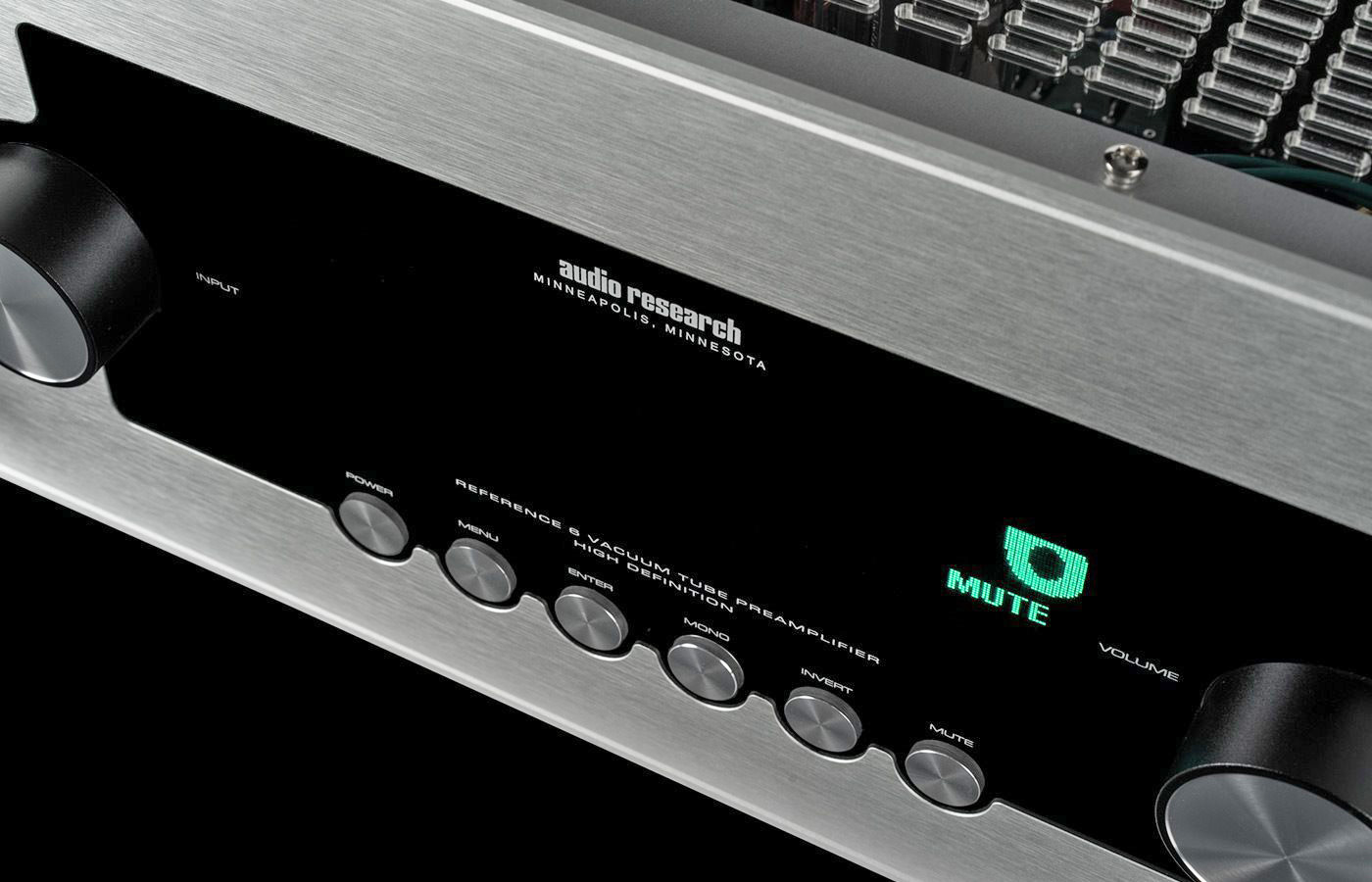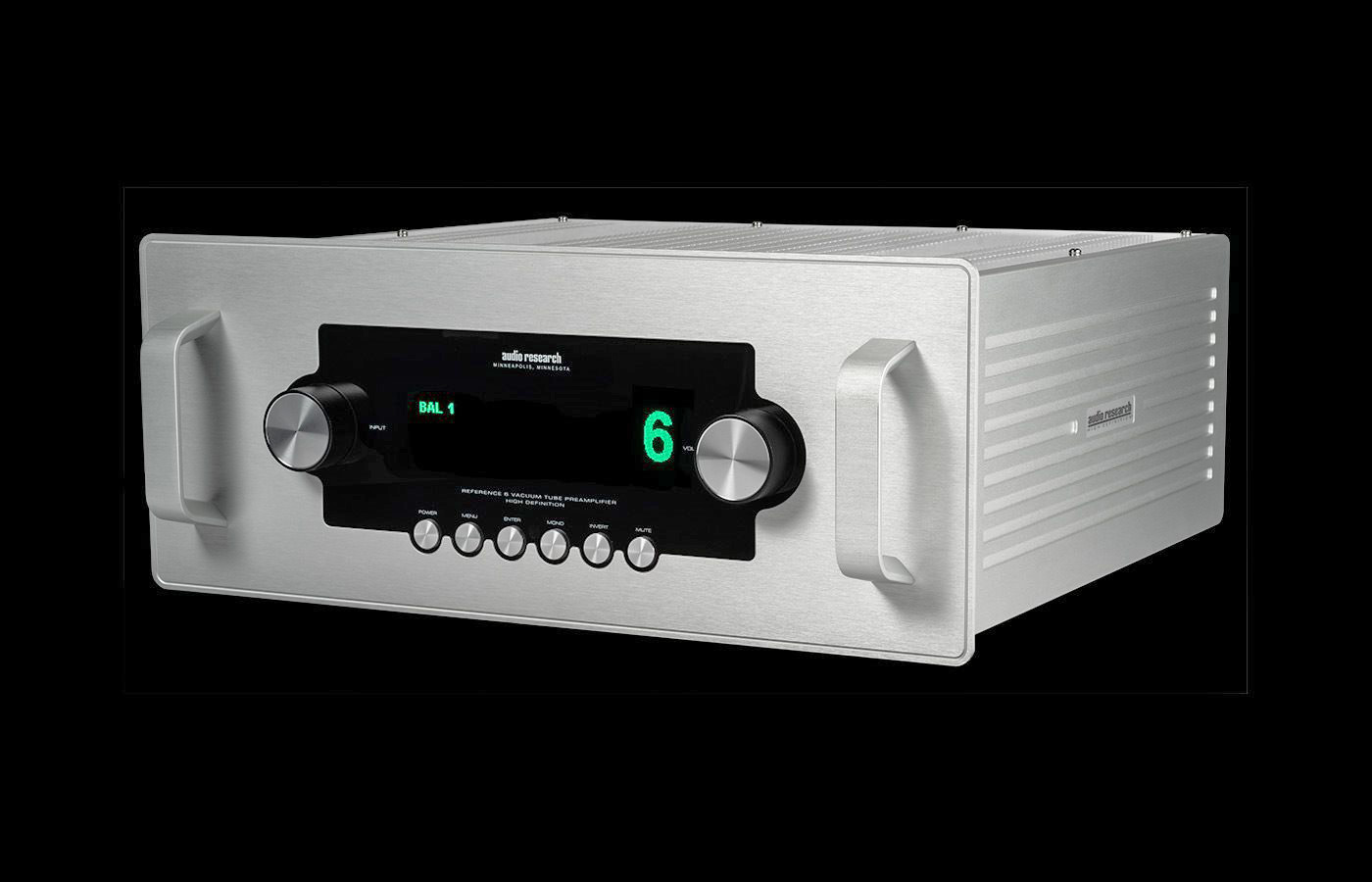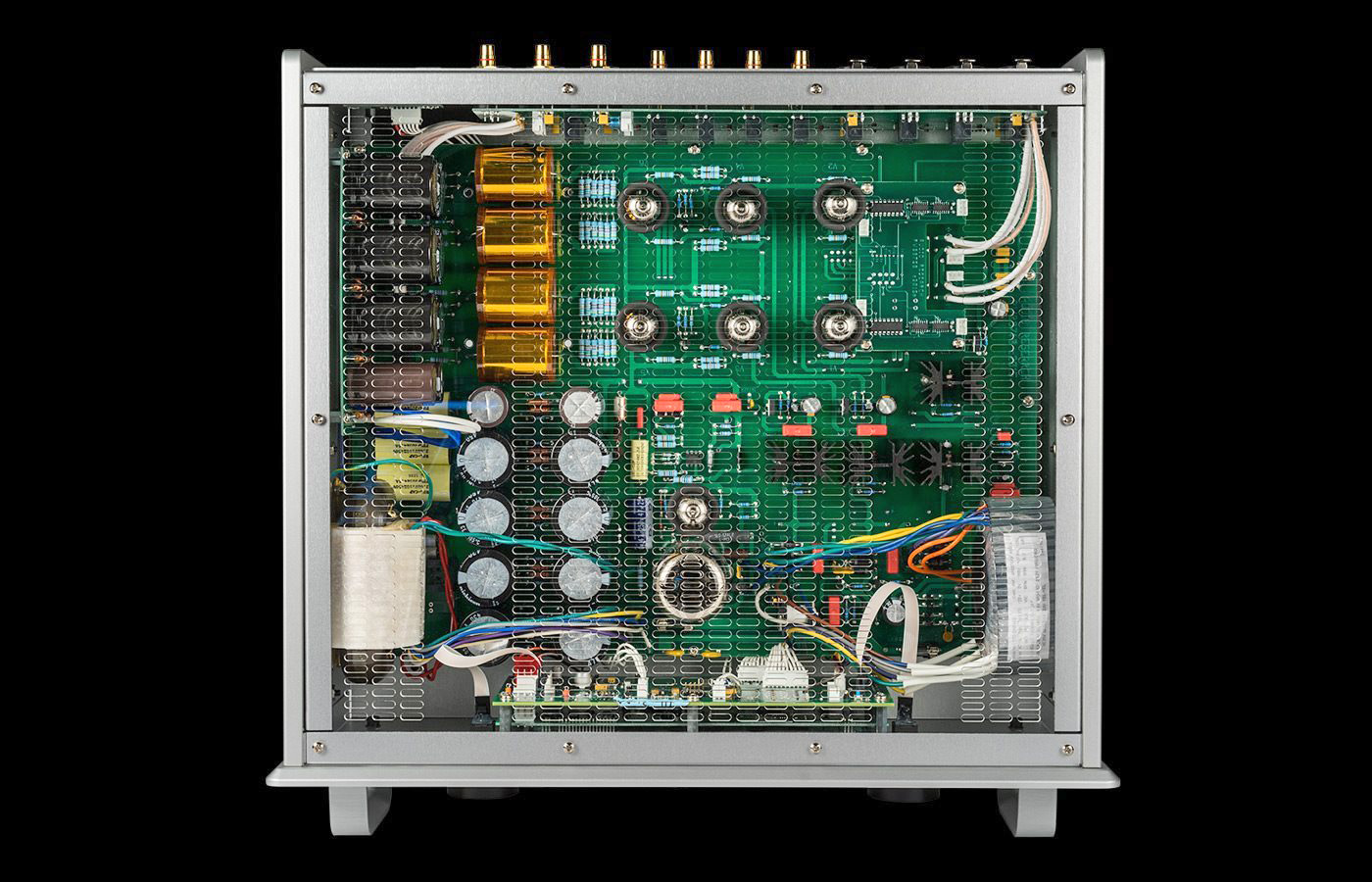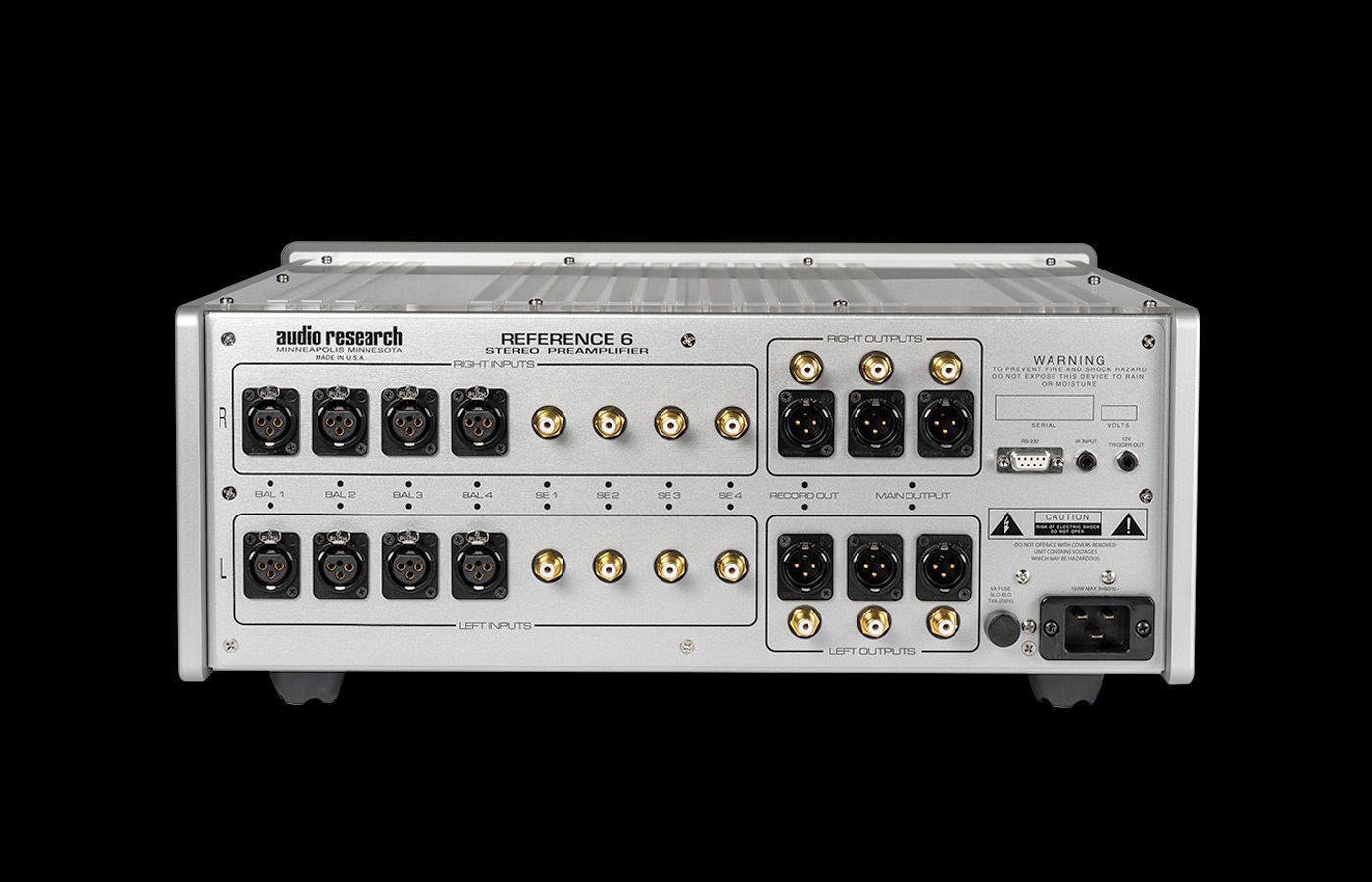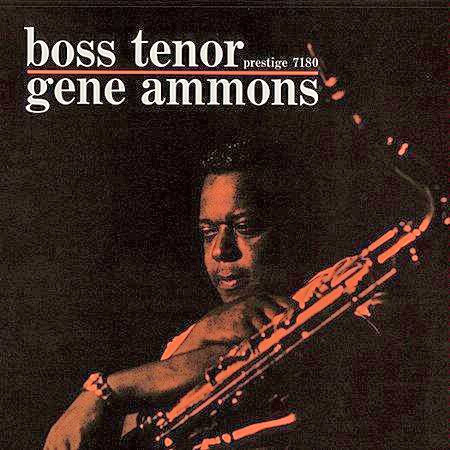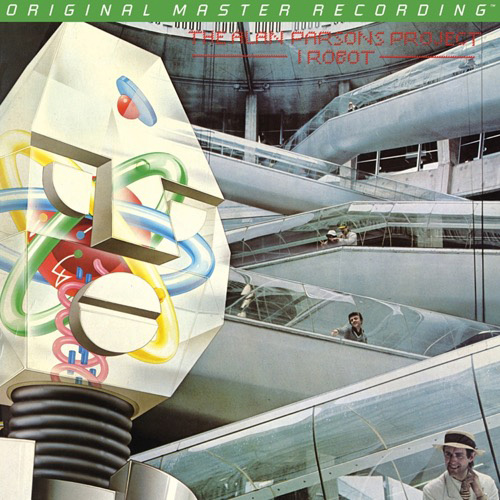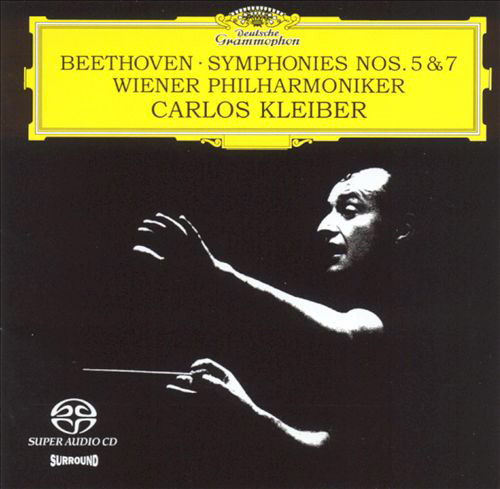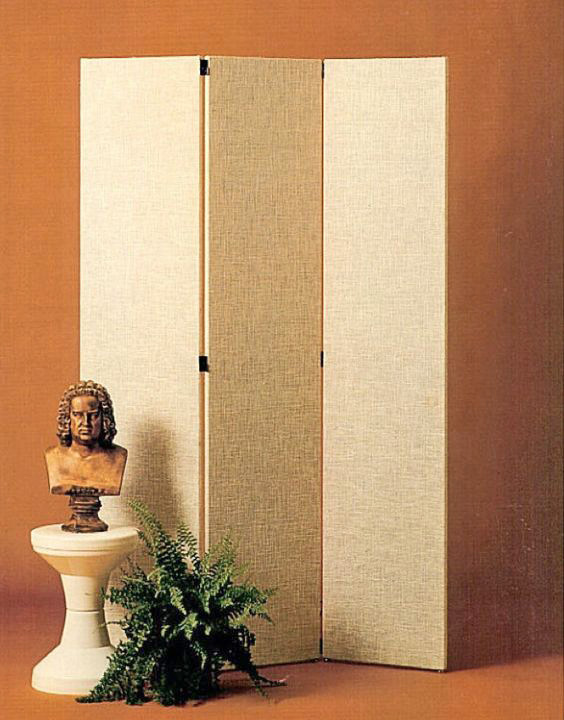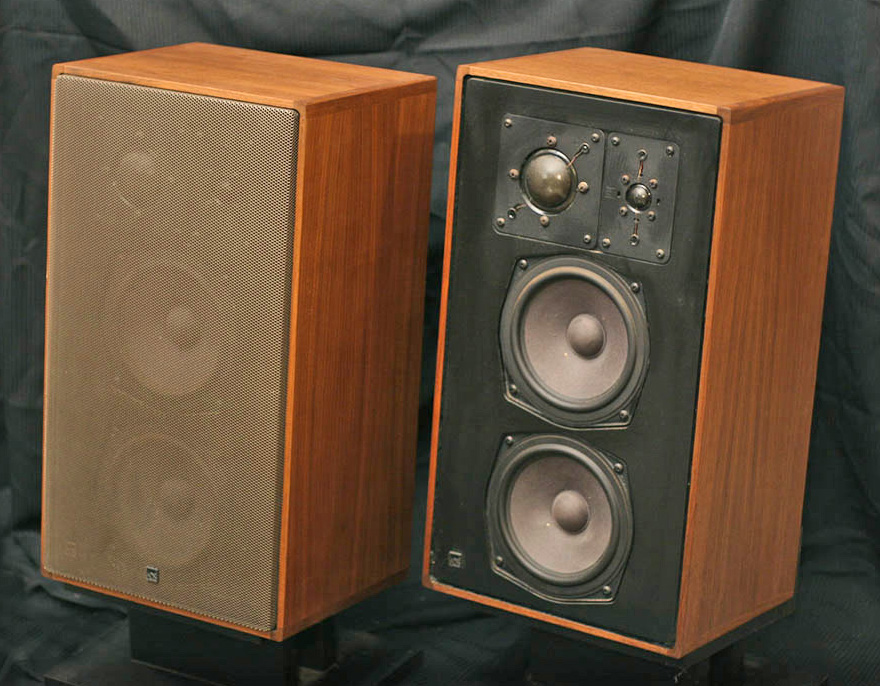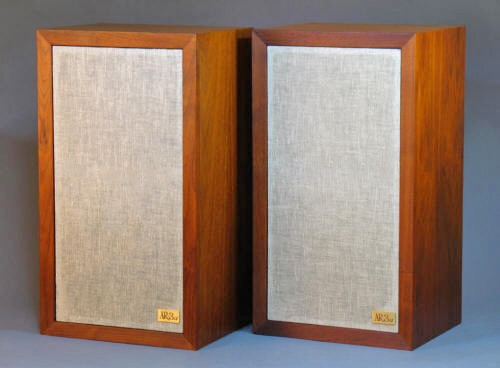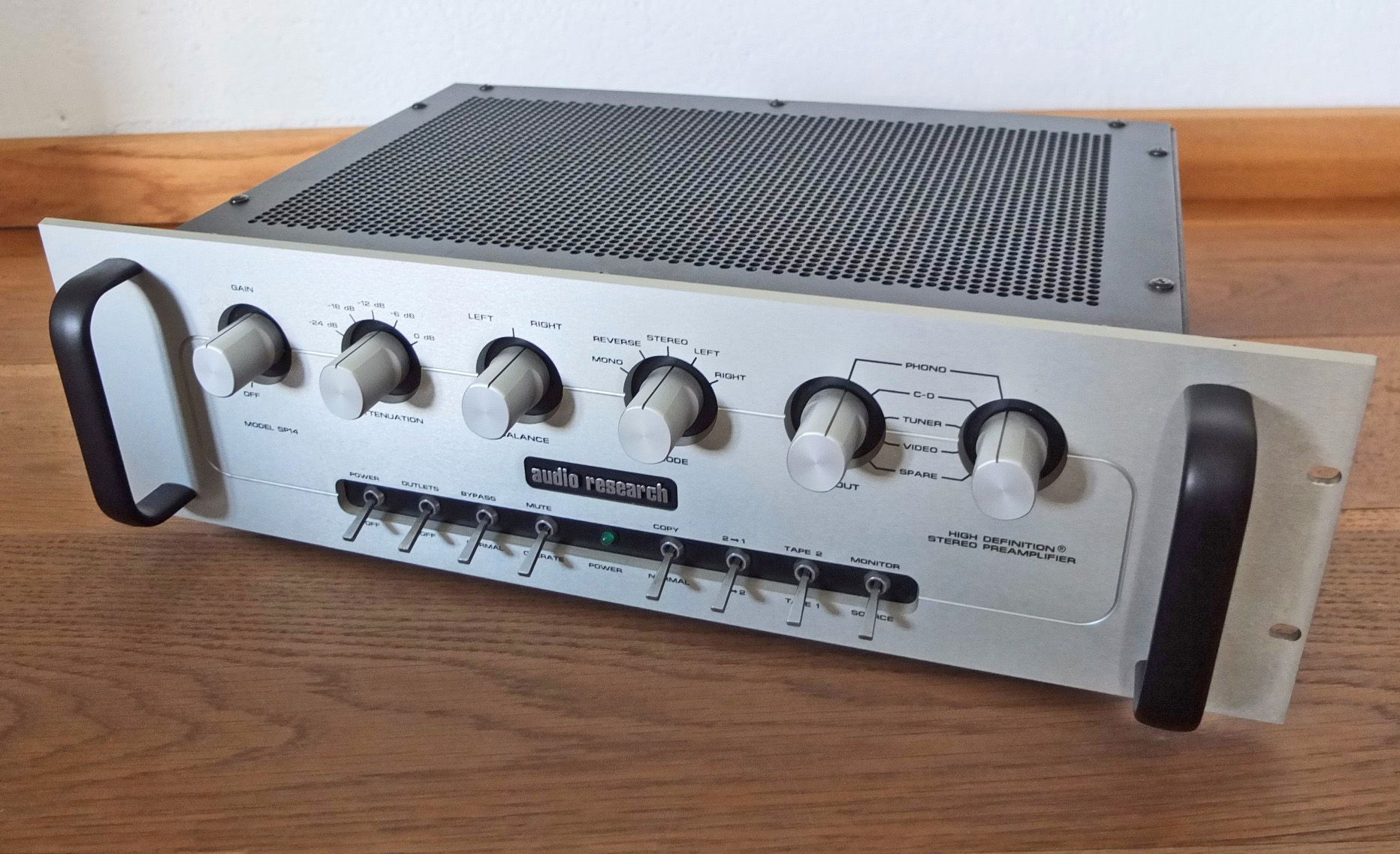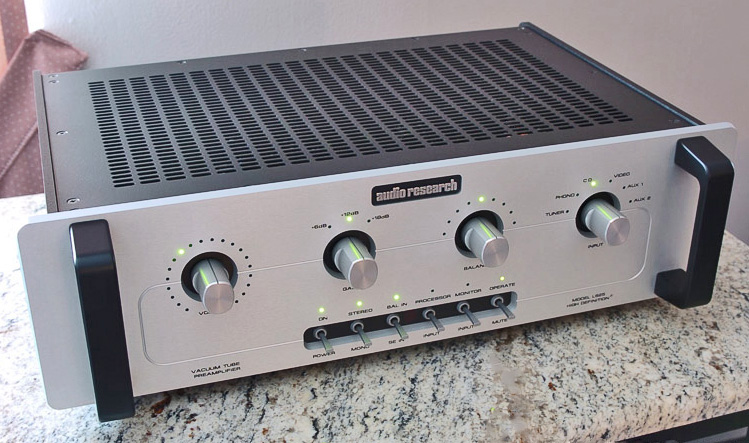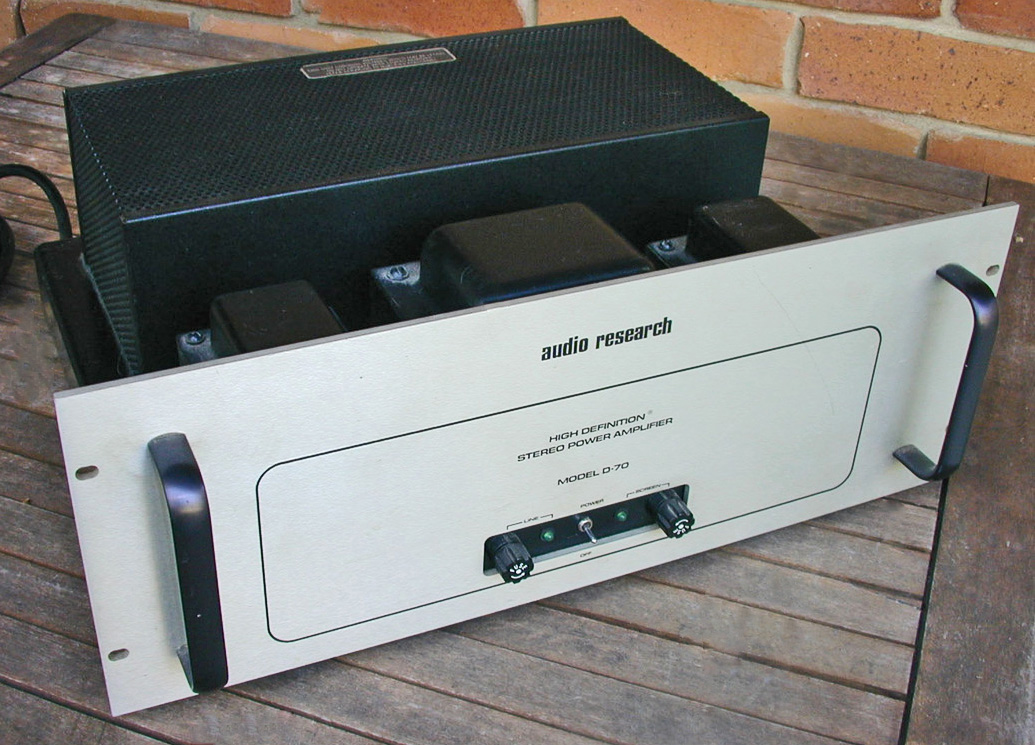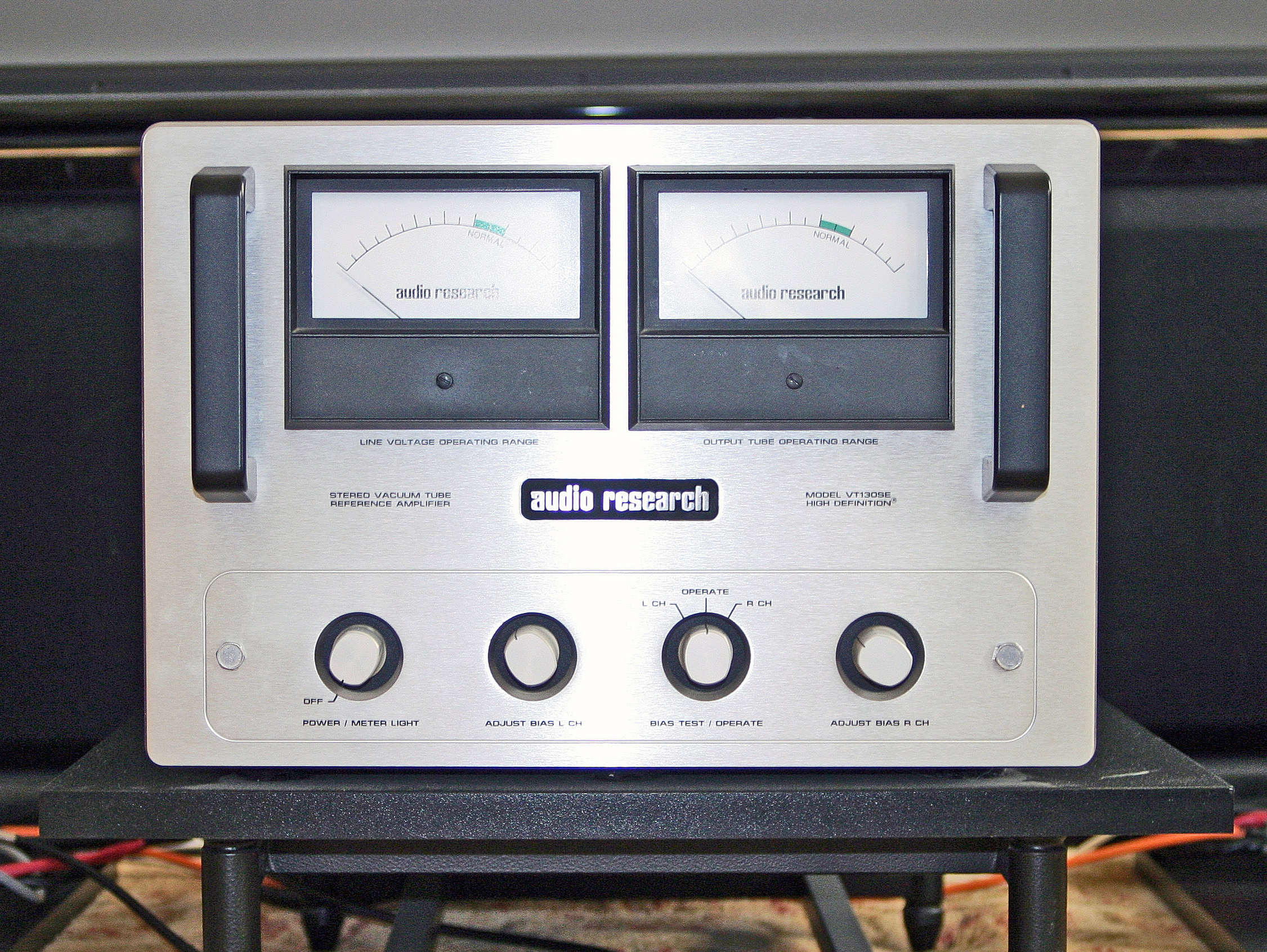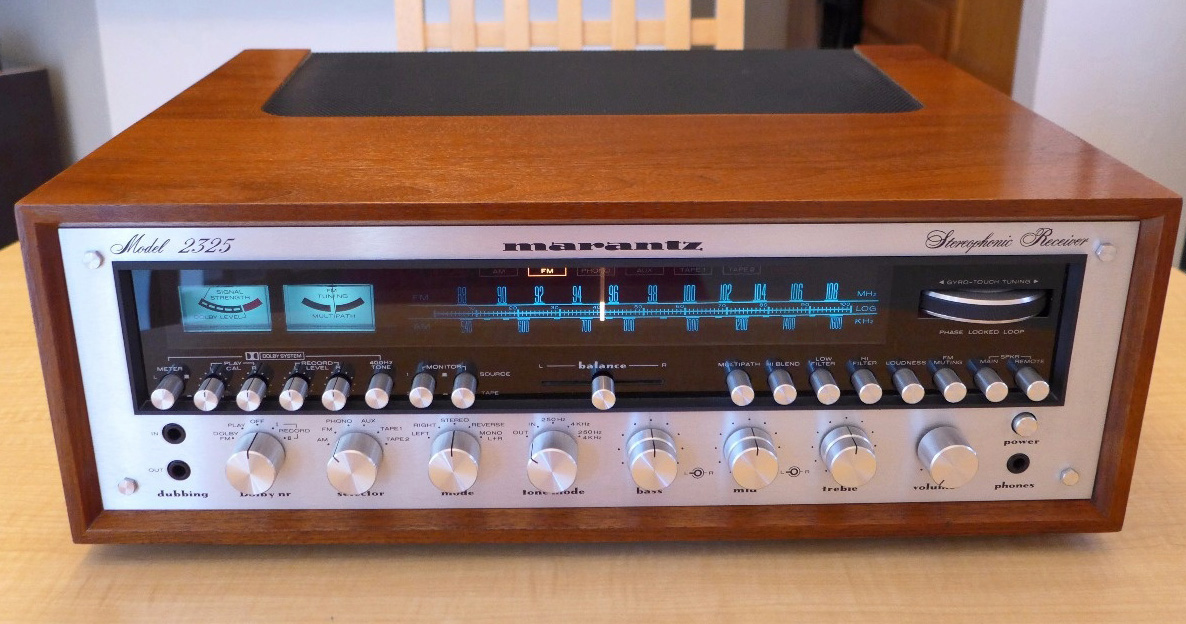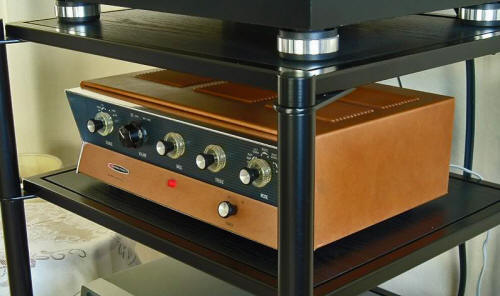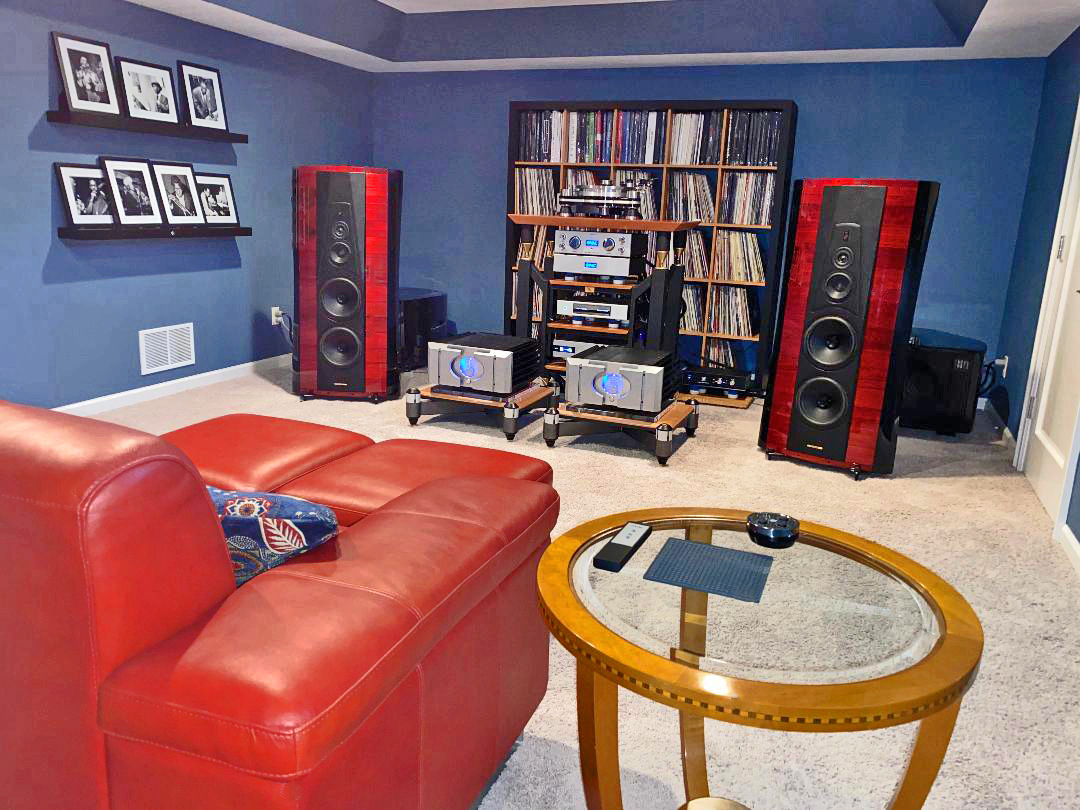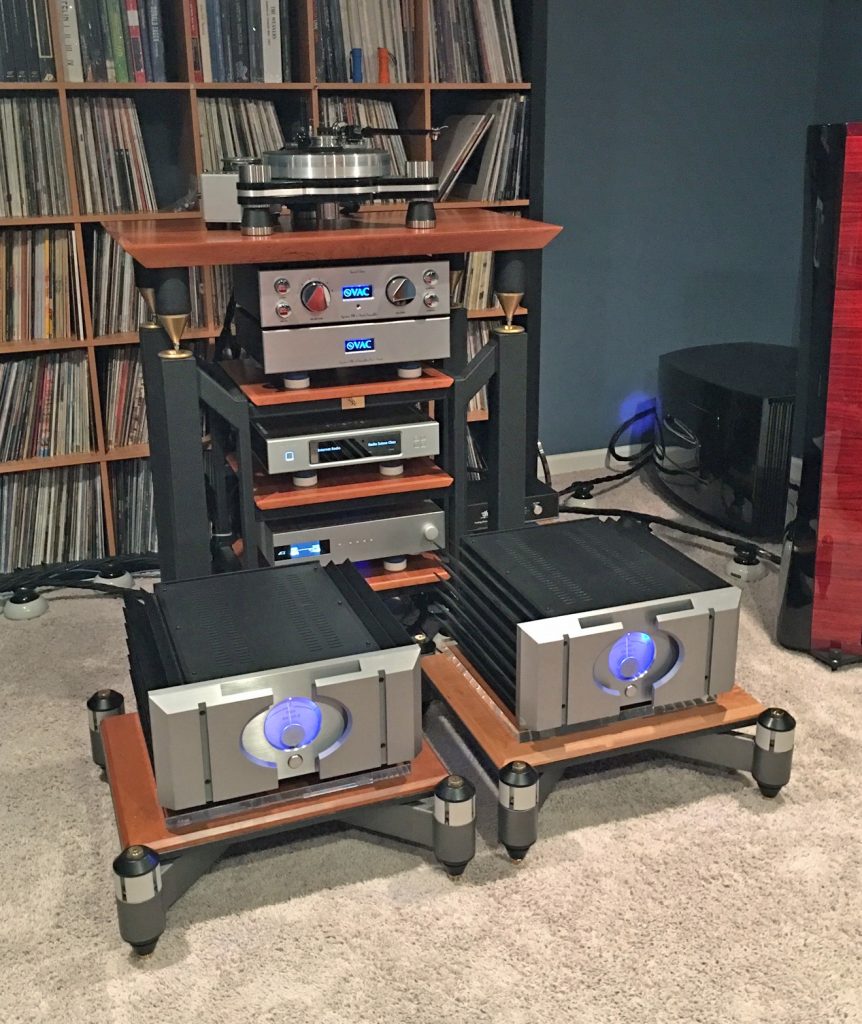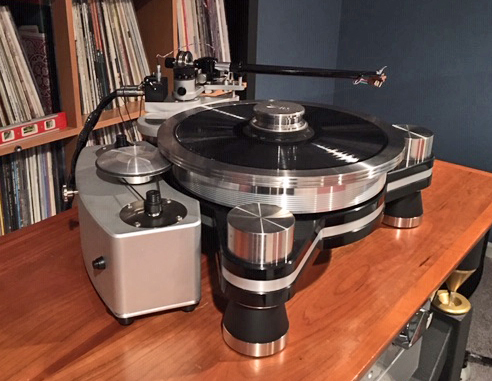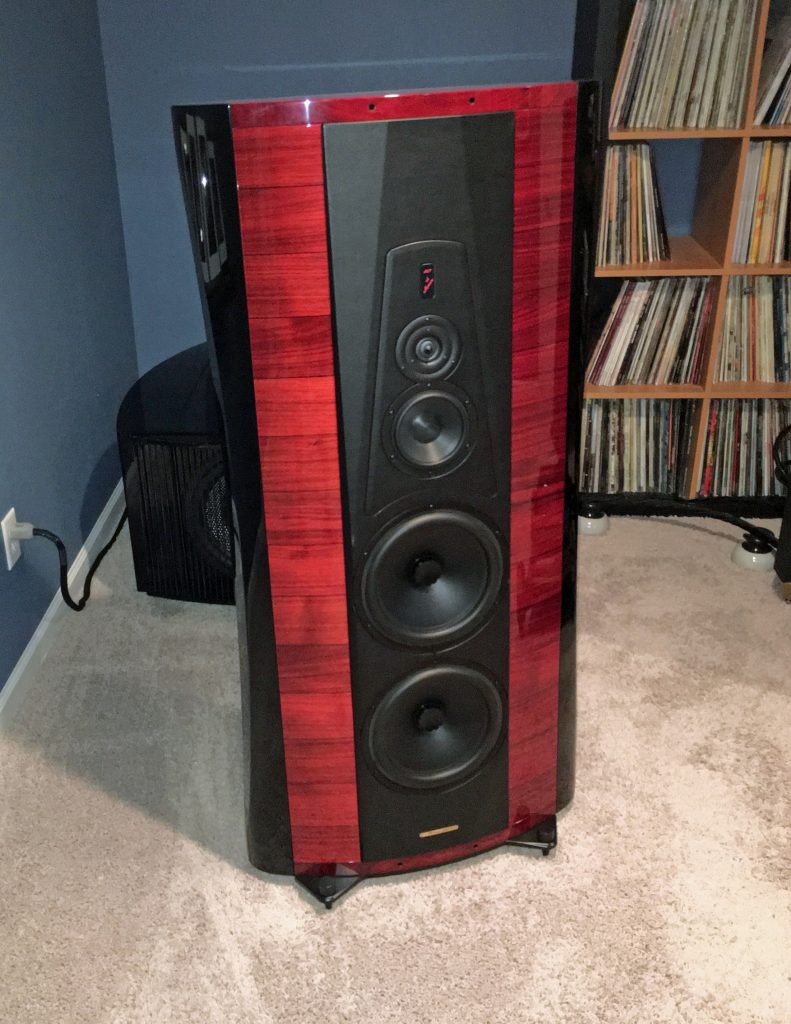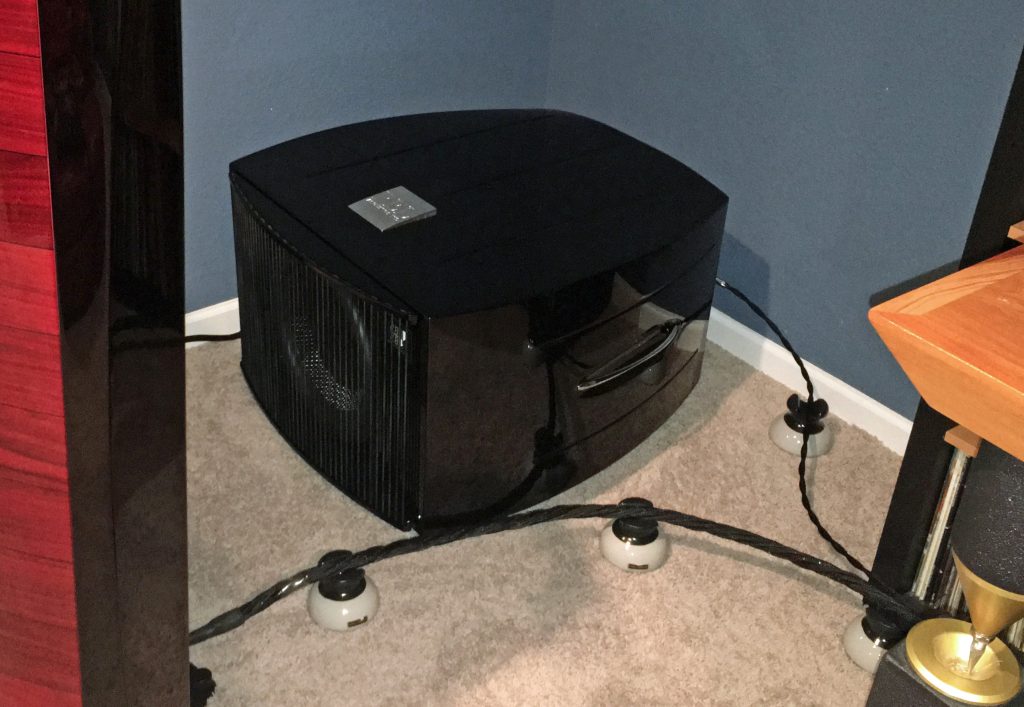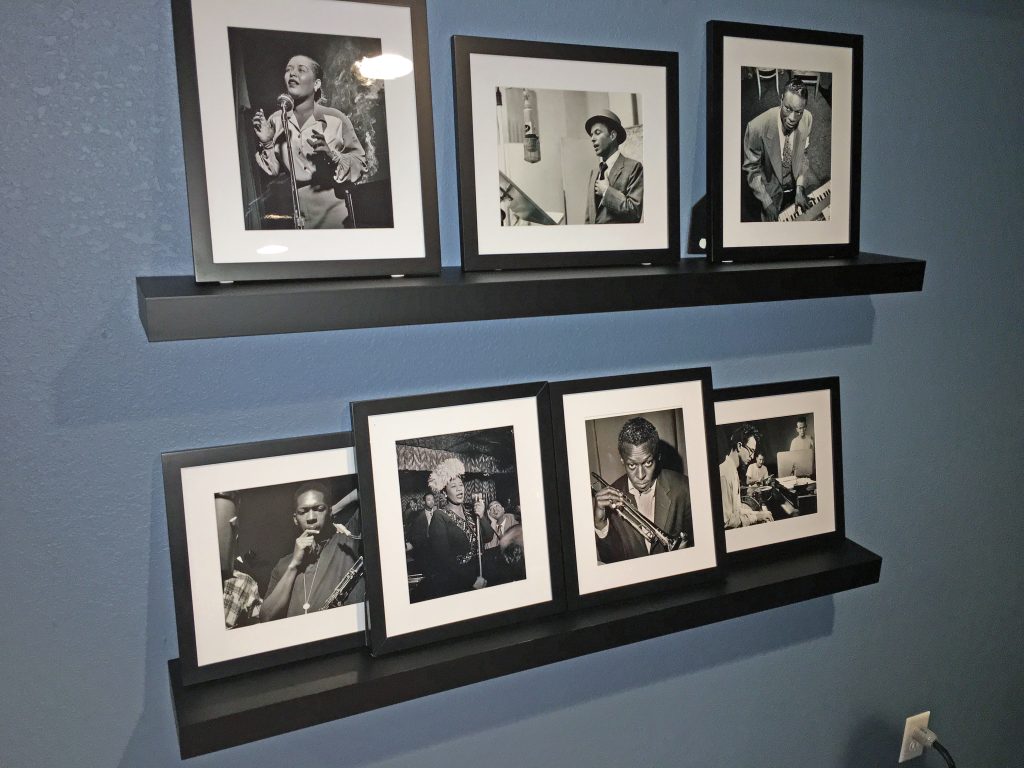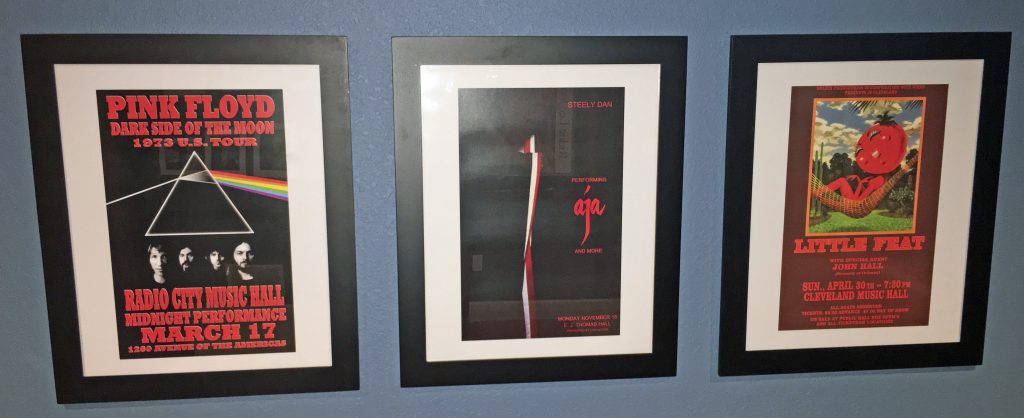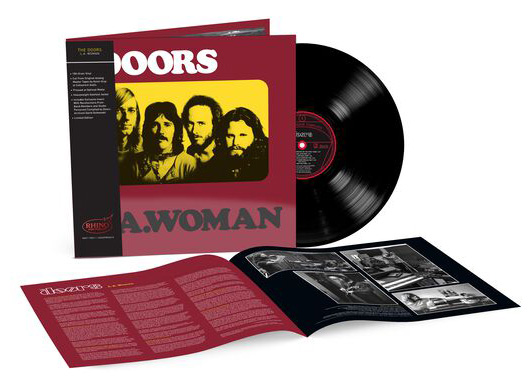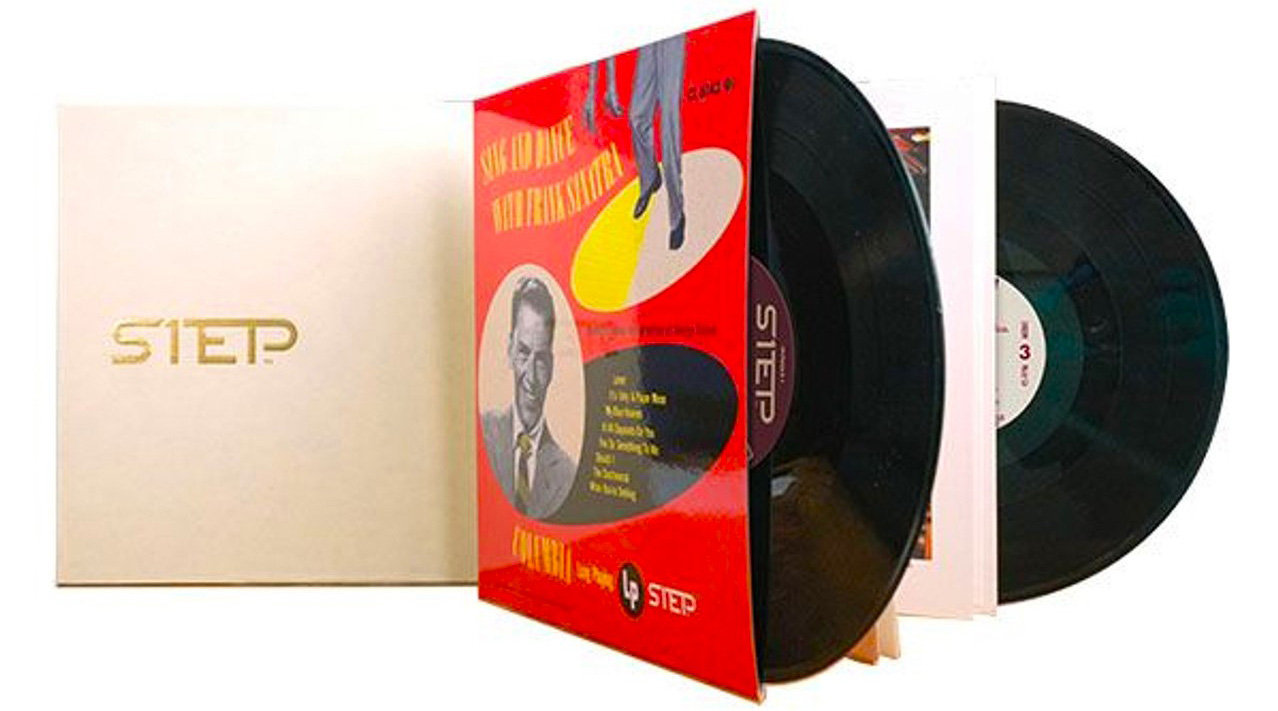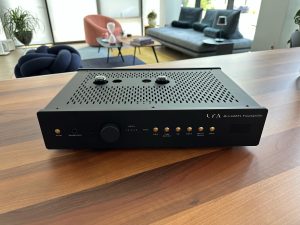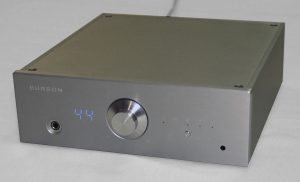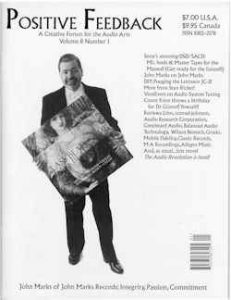This review brought back some wonderful memories. It has been quite some time since I have auditioned an Audio Research Corporation (ARC) product. Please be patient as a little backstory might explain.
Audio was a hobby that began with my Father's love for building Heathkit amplifiers and various clones of Acoustic Research speakers. He, his soldering iron and his eclectic collection of classical and jazz music got me jump started. With seven kids in the family, he never had the money to ever consider something like Marantz or McIntosh, which were the elite products of the day. He kept it affordable and simple but quite satisfying and enjoyable.
When the Chicago area was a hotbed of audio and music stores in the 1980s, I was just out of college from the University of Illinois in Champaign/Urbana. Good Vibes Audio, and Glen Poor's Audio kept me on track downstate to continue the journey that my Father began. After graduating, I returned home to Chicago with a pair of ADS 810 speakers and a Marantz 2325 receiver after several iterations of other dorm room systems. I still own and love those ADS 810 speakers which keep me company in my home office.
With a new job and some income now rolling in, I was soon scouting for something more. For a couple of years, I would plan out a Saturday every few months and hit the road to the city and suburbs. My apologies to the non Chicago folks, but bear with me as I reminisce. The local old school guys just might shed a tear with me as I mention a few audio shops that continue to linger on in my upper temporal lobe.
In the beginning, my primary go to store was MusiCraft—mostly because they had the more affordable audio lines. They also had an extensive collection of used equipment which was always fun to check out and bargain for. After that there was an endless list of possibilities: Midwest Audio, Pacific Stereo, Stereo Studio, HiFi Hutch, Allied Radio, Columbia Audio, Holm Audio, Sound Deluxe, Playback Electronics, Rosine Audio, Paul Heath Audio, Victors, Pro Musica, Audio Consultants, and Quintessence Audio. I am confident that I will hear from readers after missing a few. There are a couple of new high end boutiques that have now opened in the Chicago area, but only a few dealers remain from those glorious times.
I would also end the day at one of the many records stores that again seemed to be found in almost every town. My favorite was Record City which was a huge 5000 square foot store with an incredible collection of domestic, British, Japanese, German, half speed audiophile, pirate and cut out pressings. Right up there on the list was E.J. Korvettes which was basically a discount department store chain but had a vast selection of all the current releases with sale prices at $2.99 and $3.99—much cheaper than anywhere else. I still have some of those price stickers on several LPs in my collection.
Other favorites included The Jazz Record Mart, Rose Records, Reckless Records, Kenmac Records, Crows Nest, Beverly Records, Uno's Bizarre Bizarre, Rolling Stone Records, Deluxe Records, and Chicago Digital. Sometimes I would even make the trip to Radio Doctors up in Milwaukee. Yep, those were the days. Of course, with the Internet and digital, we just don't shop that way anymore for hardware or software. Let me pause here and sigh while I wring out and place my trusty white handkerchief back into my pants pocket (another old habit that the Millennials just cannot relate to).
Where is this all leading? Well, two of the more esoteric high end stores in the Chicago area were Rosine Audio and Paul Heath Audio. They both carried Audio Research at one time or another. I remember my first visits to each. When I sat down at Rosine and listened to the Audio Research D-70 amplifier driving the Infinity IRS Beta speakers (with their classic EMIT tweeters and Watkins woofers) and then followed that with a listening session at Paul Heath that included the Audio Research D-250 amplifier and Magnepan Tympani speakers (with their infamous original quasi-rhythm drivers), I knew that I was hooked forever. This innocent infatuation with audio then morphed into a firm commitment and emotional passion for seeking out the very best in sound reproduction! In retrospect, ARC was a key player in my love for all things audiophile.
I have owned a few ARC products over the years including the Audio Research VT130SE amplifier and the SP-14 and LS-25 preamplifiers. Each had all the tube magic that you could want in the midrange, but they did have some limitations. I always found the ARC sound to be slightly more "white" in overall presentation when compared to some of the other richer more full-bodied tube amps and preamps of that time. They were also somewhat limited when it came to extension and transparency at both ends of the frequency range. Still, the preamps matched well with many amplifiers and especially solid-state to give you the advantages of both design ideologies. ARC has rolled out plenty of impressive products in the last five to ten years, but since those three experiences, I have not had the opportunity to check out much more of the ARC product line. Until now.
Please see my recent review of the Pass Labs XP-30 preamplifier ($16,500). At the end of its stay in my listening room, I was also fortunate enough to audition the new Audio Research Reference 6 preamplifier ($14,000). IMHO, the XP-30 is possibly the finest solid-state preamp offering under $20,000. Little did I know how much the tube based Reference 6 was up to the challenge. In the end, the Reference 6 proved to be a completely different animal from any other ARC product that I have ever experienced. Let's take a little walk on the wild side to discover why.
Review System
- Magico Q7 Speakers
- Pass Labs X350.8 Amplifier
- Pass Labs XP-30 Preamplifier
- Audio Research Reference 6 Preamplifier
- Devialet 800 Integrated Amplifier
- REL Gibraltar G-2 Subwoofers
- Playback Designs MPS-5 CD/SACD/DAC
- Aurender N-10 Music Server
- Synergistic Research Element CTS Power Cords, Interconnects, Speaker Cables, and REL Subwoofer Neutrik Cables
- Synergistic Research Element CTS AES/EBU Digital Cable
- Synergistic Research PowerCell 10 UEF and FEQ - PowerCell Equalizer
- Rix Rax Hoodoo Component Rack
- Magico QPod Footers
Caveat Emptor
System synergy and personal taste are critical when evaluating high end audio products. This review is based on my subjective requirements, my subjective ears, my specific system, and my specific listening room. This combination is only one data point of many that exist out there for these components. Please consider my comments and analysis appropriately.
Design
Needless to say, Audio Research Corporation has gone through quite a transition over the past few years. Founded by William Zane Johnson in 1970, ARC has demonstrated a long and proud tradition of of superb products and continual success since the new dawn of what is now considered the high end. His passing at the age of 85 years in 2011 was a sad day for the industry—truly one of our great leaders and visionaries.
Without diving into all the details and a fairly interesting timeline of events since 2008, Mauro Grange of the Italian equity fund Quadrivio and the holding company The Fine Sounds Group, along with Charlie Randall, President of McIntosh Laboratory Inc., have now established a new company called McIntosh Group and a new brand called World of McIntosh (WOM). This brand proudly includes several premier product lines of the highest order: Audio Research, McIntosh, Sonus Faber, Sumiko, and Wadia Digital.
These kinds of transitions can be quite tricky. Typically, it is important to have one leg tied to the tradition and excellence of the past along with one tied to the vision and potential of the future. If the new Reference 6 preamplifier is any indication, Mauro Grange and Charlie Randall should be very confident about the ARC product line and the future success of McIntosh Group.
Let's start with the aesthetics. Back to this thought about linking the past and the future, there has been much discussion on the Internet about the industrial design of the Reference 6 casework. I for one find it quite appealing. The new faceplate harkens back to a 1970s original yet has a cleaner less clinical look delivering something of a new sparkle to my eyes. The silver finish, laboratory like handles, large knobs, and dark screen seem appropriate and reassuring. Some say too simple and too retro. Again, I like it.
The Reference 6 is a line stage only. This was an important decision as many of the very best preamplifiers now provide phono stage options. ARC offers a stand alone Reference Phono 3 preamplifier for those in need. Many argue that stand alone design and execution for phono is required for best performance. I do not necessarily agree, but based on several personal listening sessions, the Reference Phono 3 is without doubt a superb component. I may have more to say about this down the road—stay tuned.
Compared to the four 6H30 triode tubes utilized in the Reference 5 SE, the Reference 6 invokes a total of six at three per channel. The Reference 6 also employs one 6H30 triode and one 6550WE tetrode for the power supply. Compared to past models, a larger power transformer, and new custom designed capacitors have also been implemented. All of these choices are said to improve the linearity and gain characteristics of the overall design thus translating to a more dynamic and transparent presentation.
The Reference 6 has four balanced and four unbalanced inputs. All are nicely assignable from the front panel display and menu tree which makes for considerable flexibility and customization. Outputs include two for main and one for record output. Balanced and unbalanced options are available for all three.
A remote control is included which is nicely laid out and provides for all the functional needs you could possibly want. Front panel controls include Volume (very flexible at 103 steps), Input, Power, Menu, Enter, Mono, Invert, and Mute. Additional features include automatic volume reset, tube-hour counter, display brightness, auto shutdown and home theater integration options. Please see the ARC website for details.
Specifications
- Frequency Response: +0-3dB, 0.4Hz to 200kHz at rated output (Balanced, 200k ohms load).
- Distortion: Less than .01% at 2V RMS BAL output.
- Gain: Main output: 12dB Balanced output, 6dB SE output. Record out: 0dB. Processor input: 0dB BAL output.
- Input Impedance: 120K ohms Balanced, 60K ohms SE.
- Output Impedance: 600 ohms Balanced, 300 ohms SE Main (2). 20K ohms minimum load and 2000pF maximum capacitance.
- Output Polarity: Non-inverting.
- Maximum Input: 18V RMS BAL, 9V RMS SE.
- Rated Output: 2V RMS (1V RMS SE) into 200K ohm balanced load. Maximum balanced output capability is 70V RMS at less than 0.5% THD at 1kHz.
- Crosstalk: -88dB or better at 1kHz and 10kHz.
- Noise: 1.7uV RMS residual IHF weighted balanced equivalent input noise with volume at 1 (109dB below 2V RMS output.)
- Power Requirements: 100-135VAC 60Hz (200-250VAC 50/60Hz) 130 watts. Standby: 2 watts.
- Dimensions: Width: 19" (48 cm), Height: 7.8" (19.8 cm), Depth: 16.5" (41.9 cm), Handles extend 1.6" (4 cm) forward of the front panel. Shipping Weight: 49 lbs. (22.3 kg)
Sound
As stated earlier, the Audio Research Reference 6 is a horse of a different color. My past experience is somewhat limited across the entire legacy ARC product line, but I do have very familiar benchmarks that I thought would be tough to equal if not surpass. I was soon to learn different.
Many ARC aficionados say that there has been a continual and consistent improvement in sound performance for all the Reference single chassis preamplifiers from the original Reference 1 (1996) to the Reference 2 (1999), Reference 3 (2004), Reference 5 (2009), and the Reference 5 SE (2012). By their ears and standards, the Reference 6 has taken the most dramatic and rewarding step forward in the entire series. By my ears and standards, the Reference 6 is simply the finest single chassis preamplifier that I have heard—tube or solid-state.
For me, it always starts with the mids for most preamps. You can forget my subjective feelings concerning the traditional ARC "white" tonal color mentioned earlier. The Reference 6 has an incredibly addictive lifelike presence and bloom that will draw you in and dazzle your senses. There is so much harmonic texture and rich layers of information that you will have to pinch yourself to remember that you are in a listening room and not the original event. Female vocals, saxophone, piano—it does not get any better or more seductive!
Highs do not have quite the speed and vigor of the three chassis solid-state Pass Labs XP-30 preamp, but there is plenty of fleshed out inner detail that can be quite sweet and alluring. Hi-hat cymbals have just the right balance of metal, shimmer and tone without the grain and forwardness that can often overwhelm on the very best closely mic'd recordings. Acoustic, classical, and flamenco guitars are easy to differentiate based on the sound and construction of the wood body and the use of steel, nylon, or gut strings. Bells and triangles have a realistic purity and weight that seem to linger on for ever.
The real epiphany was realized while listening to my standard review set of acoustic and electric bass tracks. I have never heard low end slam and transparency like this from a tube preamplifier—single chassis or even multiple chassis with a standalone power supply. Yes, not quite as tight and agile as the Pass Labs XP-30, but my goodness, there was so much physical authority and blunt power that I found myself quite startled. No overhang. No bloat. Just immediacy and dynamic punch that will make your heavy metal and acoustic bass jazz recordings sing to the high heavens!
ARC preamplifiers are known for their spacious soundstage and an almost overwhelming sense of scale and ambiance. The Reference 6 is no exception as the tradition continues. Images were projected with pin point precision and density that can easily compete with the very best. My current benchmark for soundstage and imaging may surprise you. To my ears, the analog preamp outputs of my digital hybrid Class A/D Devialet 800 integrated amp ($30,000) has no peer for these variables. The Reference 6 is just a slight notch behind and would absolutely be my standard if I never heard the Devialet.
Impressive stuff regardless of the variable and comparison. We talk about the audiophile check list, but you will quickly forget all about that once the music begins. What really counts will soon become very clear and quite satisfactory. What is truly powerful is what the Reference 6 can offer in the aggregate. There is an emotional connection and a level of excitement with the Reference 6 that is very tough to match.
Music
Gene Ammons – Boss Tenor
Boss Tenor was originally recorded in 1960 on the Prestige label, but my favorite release is this recent Analogue Productions Hybrid SACD reissue. Another jazz classic produced by Bob Weinstock and engineered by Rudy Van Gelder, it is a well known audiophile staple that can provide a stern test for any audio system. Band members included Gene Ammons on tenor sax, Tommy Flanagan on piano, Doug Watkins on bass, Art Taylor on drums, and Ray Baretto on congas.
There ain't nothing more thrilling than a killer tube preamp and a top notch recording of tenor saxophone. Gene Ammons is considered by many as a founding father of the "Chicago School of Tenor Sax." This clearly shines through as I love him for his slow ballads and deep breathy timbre and tone. He was fairly versatile in his jazz compositions and interpretations with many elements grounded in blues, gospel and R&B.
My favorite track on this album is My Romance, penned by Richard Rodgers and Lorenz Hart. The Reference 6 produces a smoldering, heart rendering, three dimensional holograph-like image of Ammons at his best. A reedy thick tenor sax will just drip from your speakers as he turns and breathes through every note. Tommy Flanagan on piano can be lost in the background on some systems, but here he clearly stands out and supports Ammons with a meandering yet sweet platform as the master is lost in improvisation. Without question, the Ref 6 sets a new standard with this cut on my system.
The Alan Parsons Project – I Robot
I Robot was released in June 1977 on the Arista Records label. This was the second studio album produced and engineered by Alan Parsons and Eric Woolfson who were the key members of the Alan Parsons Project. The music is primarily based on the Isaac Asimov science fiction trilogy entitled Robot. Related themes include positronic robotics, the evolution of artificial intelligence and space exploration ("the rise of the machine and the decline of man").
Alan Parsons is of course well known for his production and engineering contributions to several highly respected and award winning albums. This includes The Beatles Abbey Road, Pink Floyd Dark Side of the Moon, and Al Stewart Year of the Cat. The music on I Robot will remind many of certain passages from progressive rock bands like Pink Floyd, Tangerine Dream, Kraftwerk, and even Vangelis.
When half speed audiophile LP reissues were first hitting the market place, I remember the Mobile Fidelity I Robot release in 1982 as being one of my first purchases of that genre. At a friend's home, I also remember hearing the limited edition and numbered Mobile Fidelity UHQR (Ultra High Quality Record) box set released in 1983. I was amazed at the improved clarity and dynamics of both—the UHQR was especially impressive.
BTW, the UHQR was limited to 5000 pressings on 200mg JVC SuperVinyl with packaging and liner notes like I had never seen up to that time. Sealed copies are now going for $400 and up on eBay. Now we have a new hybrid SACD from Mobile Fidelity that continues the legacy.
The music still holds up 40 years later. The title track is one of the more famous intros in rock history. The Reference 6 does a fabulous job of demonstrating what the very best equipment can dig out of the finest recordings. The dynamic range, power and detail of this release is absolutely amazing. You will be swept away by the layers and layers of synthesizer, keyboard, and guitar as the music ramps up and explodes across the soundstage. The chorus seems to gently float above the speakers as the bass line seems to rumble beneath your feet and throughout the room. Who says that tubes are not for Rock stars? The Reference 6 delivers it all.
Carlos Kleiber & the Vienna Philharmonic – Beethoven's Symphony Symphony No. 5 in C minor, Op. 67, and the Symphony No. 7 in A major, Op. 92
This SACD was released on the Deutsche Grammophon label in 2003. The performance is considered by many as one of the finest Beethoven symphony interpretations ever recorded. I was always wowed by Kleiber and the Vienna Philharmonic, but unlike some, I never thought the sound on the original 1996 CD was ever something special. The SACD is a definite improvement—smoother, richer and with more transient speed and vitality. Via the Ref 6 and on SACD, I now have a new appreciation for what might be possible even on very good but not audiophile quality recordings.
Kleiber was always highly respected for his commitment to detailed instrumentation and accuracy to the score. His brilliant musicality and technical skills are on full display here. The Fifth is what will really grab your attention. Through the Reference 6, the sheer excitement and power of the orchestra is unleashed and finally realized. Now we have the superb dynamics and pure emotion that this recording deserves.
Compared to the shrillness and congestion of the strings through other components, the soundstage is now laid out in a more natural way with significant improvements in transparency and delineation. Horns have less strain and more metal with additional body and weight. Spatial cues never heard before will suddenly surprise you at every frequency and from every section of the orchestra. Again, the most dramatic change is the dynamic contrast and clarity from the quietest passages to the loudest (there are many so hold onto your seat). The Ref 6 is a real game changer for this recording!
Final Thoughts
This review has been a wonderful journey from the past to the present, all magnificently hosted by the legacy of the Audio Research Corporation and the Audio Research Reference 6 preamplifier. You have heard it all before, the line is now a blur between solid state and tube preamplifiers. Though there are other strong contenders, the Reference 6 has no peers at this price point. Again, that goes for solid state or tube (or digital for that matter).
If you are looking for immediacy and lifelike presence at every turn, the Reference 6 should be on your audition list. If you are looking for midrange magic and bass performance that will exceed all expectations, you should double down on this recommendation. The legacy continues. The new vision has set a new benchmark. Very highly recommended!
Vintage Gallery Flash From The Past
I thought that readers might get a kick out seeing some of the vintage components mentioned earlier.
I could not use all the pictures, but many thanks to the following folks for their contributions to this effort: Steve Corras, John Murt, John Grende, Wendell Diller (magnepan.com), Verner Becker (hificlassic.dk), Larry Diaz (highendpalace.com), Klaus Pohlig (infinity-classics.de), and Bill McCulloch (grantfidelity.com).
Infinity IRS Beta Speakers
Magnepan Tympani Speakers
ADS 810 Speakers
Acoustic Research AR3a Speakers
Audio Research SP-14 Preamplifier
Audio Research LS-25 Preamplifier
Audio Research D-70 Amplifier
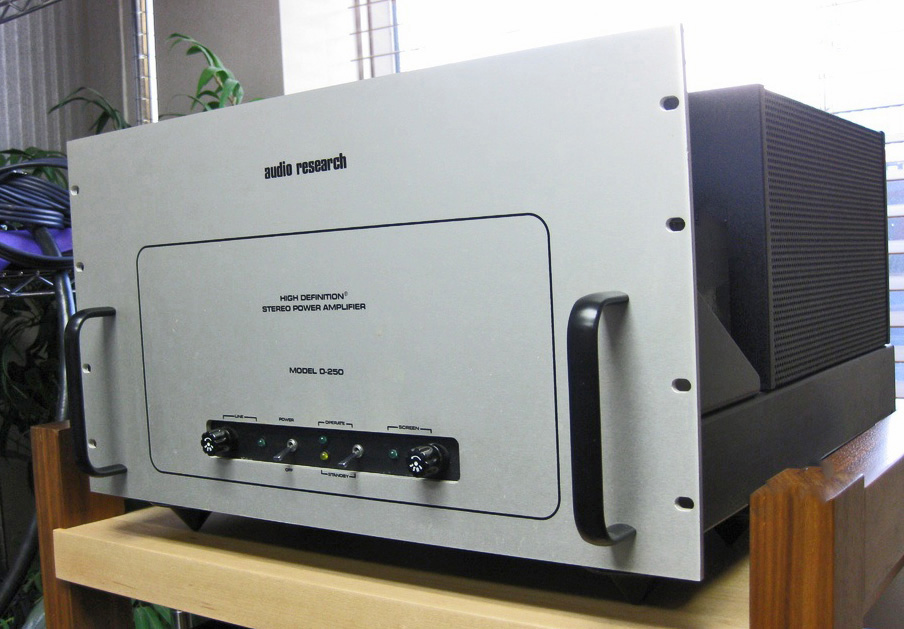
Audio Research D-250 Amplifier
Audio Research VT-130SE Amplifier
Marantz 2535 Receiver
Heathkit AA-151 Amplifier
Audio Research Reference 6 Preamplifier
Retail: $14,000 MSRP
Audio Research Corporation
3900 Annapolis Lane North
Plymouth, Minnesota USA 55447-5447
763-577-9700




